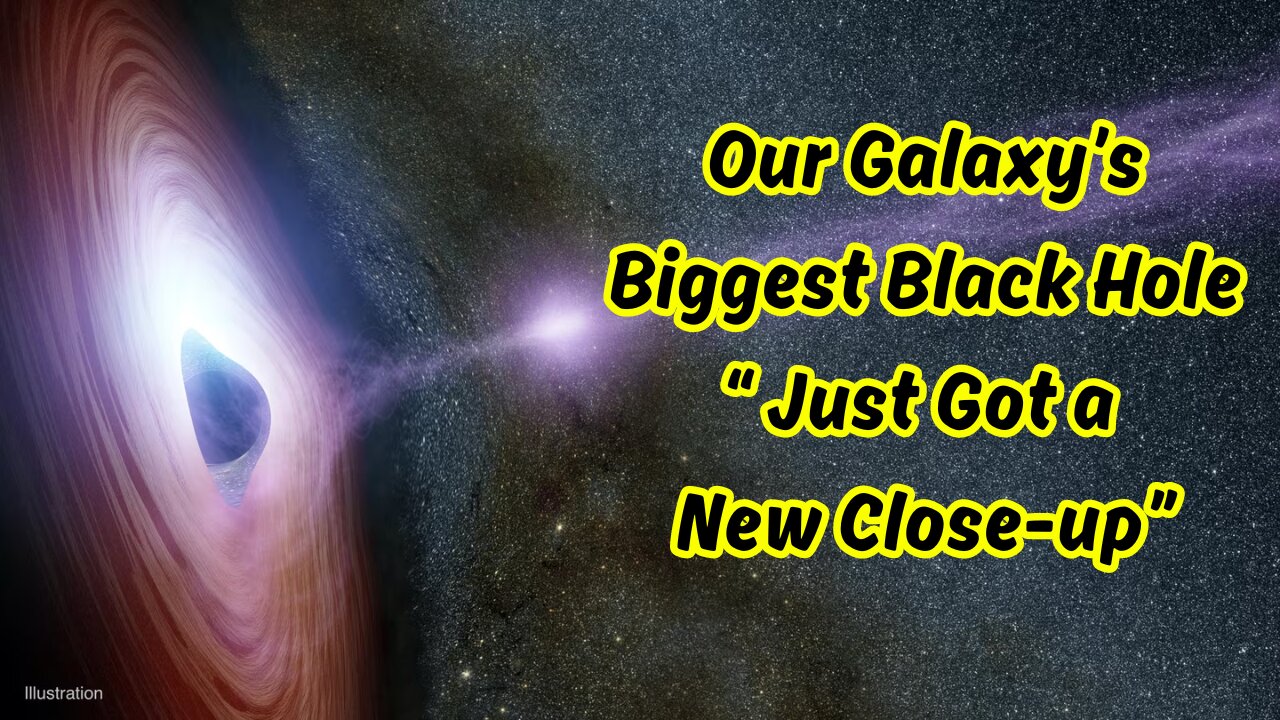Premium Only Content

Our Galaxy’s Biggest Black Hole Just Got a New Close-up. What’s Next Could Be Even Wilder
At the center of our galaxy lurks a dark, beating heart: Sagittarius A*, a black hole some four million times more massive than our sun. We cannot see this fearsome object directly—only its shadow, a lightless bubble nestled within an “accretion disk” of infalling incandescent plasma. Spotting this light-ringed dark orb from our place in the Milky Way’s hinterlands is almost unfathomably difficult, like spotting a single virus particle that’s half a mile away.
But thanks to a global network of radio observatories called the Event Horizon Telescope (EHT), scientists can not only glimpse this glowing doughnut but also map its monstrous magnetic fields. Yet as remarkable as these observations may be, they pale in comparison to what some astronomers hope to see a decade from now with an upgraded EHT.
Black holes are among the most enigmatic and important characters in our great cosmic drama. Whether they form from a single star or weigh in at billions of stellar masses, they are thought to power many of the most energetic phenomena in the known universe, from quasars to gamma-ray bursts. And supermassive black holes play a huge role in shaping the structure and flow of matter within their home galaxies. As a supermassive black hole accretes matter, the energy released in the form of high-energy radiation can heat up and redistribute the surrounding gas—affecting, among other things, galactic rates of star formation. “They are literally the origin of life, in a way,” says Sara Issaoun, a postdoctoral fellow at the Center for Astrophysics | Harvard & Smithsonian (CfA).
But so far, only two black holes have made it into the EHT’s high-resolution photo album: Sagittarius A* and the even larger M87*, a 6.5-billion-solar-mass gargantuan at the center of Messier 87, or M87, a giant elliptical galaxy some 55 million light-years from Earth. The first snapshot came in 2019 when the EHT released an image of the plasmatic torus encircling M87*. In 2022 the EHT followed suit with Sagittarius A*. These breakthrough observations sparked deeper looks: in 2021 researchers announced that they had measured how light is polarized across M87*’s inner accretion disk, which let them chart the magnetic fields around the black hole. Now the EHT team has done the same for Sagittarius A* and detailed its results in two studies recently published in the Astrophysical Journal Letters.
#milkywaygalaxy #blackhole #blackholecloseup #astronomical #solarsystem #trending #trends #SagittariusA #space
-
 2:20:24
2:20:24
Badlands Media
13 hours agoDevolution Power Hour Ep. 394: The Long Game, Media Traps, and Military Signals
68.7K18 -
 2:08:38
2:08:38
TimcastIRL
7 hours agoNetflix Shares TANK, Elon Says BOYCOTT After Writer MOCKS Charlie Kirk Assassination
207K157 -

SpartakusLIVE
8 hours agoI'M BACK || Quads w/ The Boys
73.1K4 -
 9:33
9:33
Ken LaCorte: Elephants in Rooms
11 hours ago $2.42 earnedWhy Do Black Men Love Big Butts?
23K10 -
 2:12
2:12
From Zero → Viral with AI
1 day ago $4.36 earned🚀 AI Marketing Isn’t Just for Big Brands Anymore — Here’s Why
36K10 -
 9:51:58
9:51:58
Dr Disrespect
15 hours ago🔴LIVE - DR DISRESPECT - 10 WINS ON CONTROLLER - BO7 TOMORROW
307K20 -
 1:24:56
1:24:56
Glenn Greenwald
9 hours agoTrump Declares Cities as the Enemies Within; Reagan Appointed Judge Slams Trump Over Speech Crackdowns; American ER Doctor on Gaza Atrocities | SYSTEM UPDATE #524
137K93 -
 4:07:42
4:07:42
I_Came_With_Fire_Podcast
15 hours agoPete Hegseth and the Chamber of Standards | Digital IDs | Taiwan Chips & Salsa | CDL Crisis
34.7K2 -
 2:01:46
2:01:46
Adam Does Movies
14 hours ago $0.52 earnedTalking Movies + Ask Me Anything - LIVE
21K -
 29:11
29:11
Nick Shirley
7 hours ago $4.83 earnedPortland has Fallen... ANTIFA Take Control of City
21.8K36